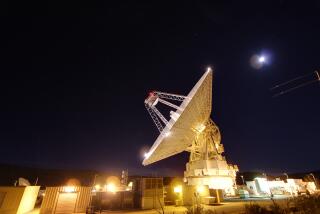U.S. Superconductivity Research Faulted : Report Cites Shortsighted Businesses, Overemphasis on Defense
- Share via
WASHINGTON — In its race with Japan to commercialize a revolutionary new method of electric power transmission, the United States faces serious obstacles, including shortsighted businesses and an overemphasis on defense research, a government report said Tuesday.
The report by the Office of Technology Assessment said that the U.S. government will spend $95 million on research and development of the emerging technology, known as high-temperature superconductivity, but it added that almost half of the U.S. money will go to defense research, where there is “limited potential for commercial spinoffs.”
Analyzed during a hearing before the Senate Governmental Affairs Committee, the 171-page report faulted U.S companies for focusing too heavily on short-term profits at the expense of long-term commercial payoffs.
‘Wait-and-See Attitude’
Contrasting U.S. companies with their Japanese counterparts, the report said that many American companies have taken a “wait-and-see attitude.” Japanese firms, on the other hand, “seem confident that investments now will pay off,” the report said.
Research into superconductivity is not confined to Japan and the United States, but as John H. Gibbons, director of the Office of Technology Assessment, put it: “There are a lot of horses on the field, but the real race is between the U.S. and Japan.”
Superconductivity, the total absence of resistance to electricity, is prized technology because it allows transmission of electric current without any loss of power--provided the current is steady, not alternating. When flowing through ordinary conductors, such as copper wire, electricity loses some power because of resistance. This resistance creates light and heat in such applications as light bulbs and stoves, but in many cases the power is simply wasted.
Low Temperatures
Scientists have been pursuing superconductors throughout the 20th Century, but until 1986, the technology for superconductivity centered on metal alloys that required extremely low temperatures, ranging well under 300 degrees below zero Fahrenheit.
Since 1986, scientists have discovered ceramic materials that permit superconductivity at increasingly higher temperatures, opening the way for use of simpler, less expensive cooling systems.
The commercial potential of this high-temperature superconductivity is enormous, experts say. Levitated trains that travel 300 m.p.h., compact super computers and advanced medical imaging equipment are among the technological innovations that scientists envision.
Doing a Better Job
While it may be years before the technology is perfected, the report by the Office of Technology Assessment, an analytical arm of Congress, asserted that Japan has done a better job of laying groundwork for a future commercial bonanza, similar to those in the automobile and electronics industries.
Richard K. Quisenberry, research director for E. I. du Pont de Nemours & Co., testified that his company budgets $10 million for research, adding: “I can assure you the innovative culture remains with us.”
Together, U.S. government and private industry will spend a total of $250 million on superconductivity research, the report said, while Japan will spend $160 million. However, the report cautioned that the Japanese figure is low because of incomplete company data and because some Japanese salaries are omitted.
Moreover, the report said, the Japanese private industry effort is much broader than the U.S. effort; about 900 Japanese researchers work on superconductivity, compared to 625 Americans.
More to Read
Inside the business of entertainment
The Wide Shot brings you news, analysis and insights on everything from streaming wars to production — and what it all means for the future.
You may occasionally receive promotional content from the Los Angeles Times.










